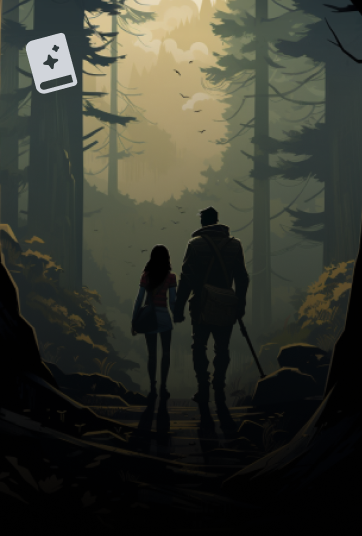
The Book of Joan
Ratings10
Average rating2.5
We don't have a description for this book yet. You can help out the author by adding a description.
Tags
Reviews
Popular Reviews
Reviews with the most likes.
I wanted to like this novel–a Joan of Arc story set in the future, in space!–much more than I actually did.
There have been catastrophic wars on Earth, and the surviving elite have “ascended” to some kind of space station called CIEL, where no one is allowed to live past age 50 and people fetishize skin grafting and body art to a bizarre degree. The leader of CIEL, Jean de Men, was one of the chief combatants in the wars, and brought people to CIEL with a vision of a new life enhanced by technology. However, CIEL is draining the ruined planet Earth of the last of its resources, and the people living on CIEL can no longer reproduce, so life there appears to be a dead end.
Christine, a 49 year old woman living on CIEL, and her old friend Trinculo, a gay man whom she has loved since childhood, get in trouble with the authorities by flouting the rules. When Trinculo is sentenced to death, Christine decides to intervene in his execution and try to spirit him back to Earth. Her defiance is bolstered by finding out that her hero, Joan of Dirt, who was supposedly executed by Jean de Men, is still alive.
Meanwhile, back on Earth.... We learn a little bit of Joan's story, how she heard the Earth singing as a young girl, became a warrior during the wars and fought viciously against Jean de Men. We learn that she is living underground with her girlhood companion and fighting a guerilla campaign against CIEL's supply lines from Earth.
There's so much here, with references to medieval art and literature, themes of environmental destruction and human fascination with technology. It's very rich. It's also brutally, grossly violent in both plot settings, Earth and CIEL. Unfortunately, aside from the violence, which is presented without any ambiguity, it can be hard to tell exactly what is happening or why it is happening. In this way it reminded me of the book The Life of Elves, by Muriel Barbery, in which you need a high tolerance for not knowing what's going on. I endured the violence because I was intrigued by the premise of the story and the richness of the content, but I am hazy on what actually happened in this book's plot.
Rally wanted to like this because I love the story of Joan of Arc but unfortunately I didn't believe a word of this. I'm totally on board with necromancy and genetically-enhanced humans interfacing with walls but Lamarckian evolution? New species forming over a single generation? Humans ‘evolving' through walking over a rocky terrain for a very long time? Get outta here.
I found this book on numerous “best of” lists for 2017. While I've seen it portrayed as a “modern re-telling of the Joan of Arc story,” this classic tale is mostly tangential to the plot. It takes place in a future where humans have almost completely destroyed the earth and it's creatures. The elite ones who remain orbit in a space station like structure above the earth. Life there is strangely disconnected from sexuality and all other types of physicality. Bodies serve as canvases upon which huge flaps of skin are grafted to show social status and stories are written in a tattoo-like process.
While there is action to the plot, much of the story is the atmospheric creation of this future human existence and the building of the rebellion which threatens to topple it. For me, one who enjoys reading novels with alternative realities not too different than our own, the basic question about the world constructed is: Would I want to experience the world further by reading a sequel? The world of this novel leads me to answer “no” and thus my review is lower than it might be otherwise.



























